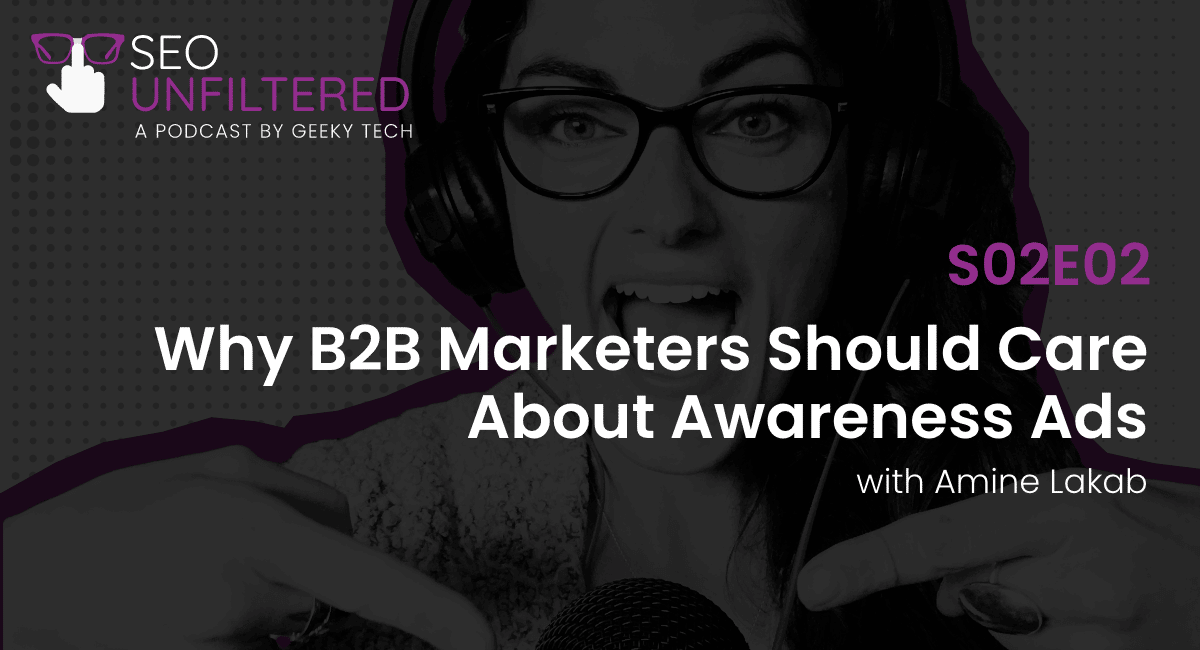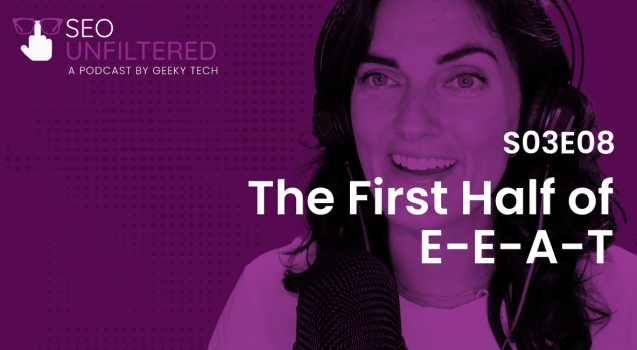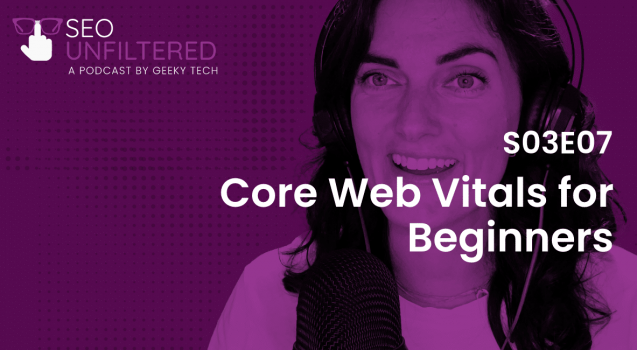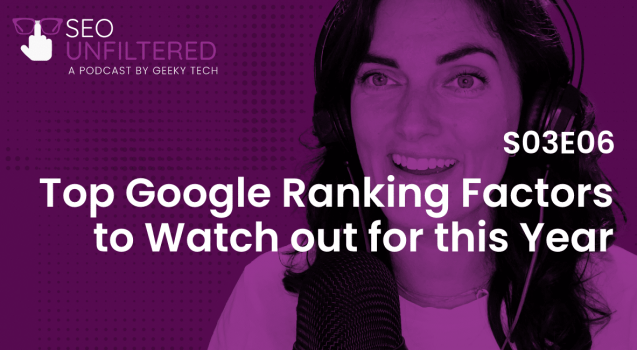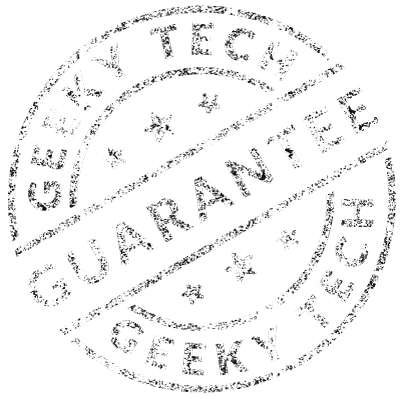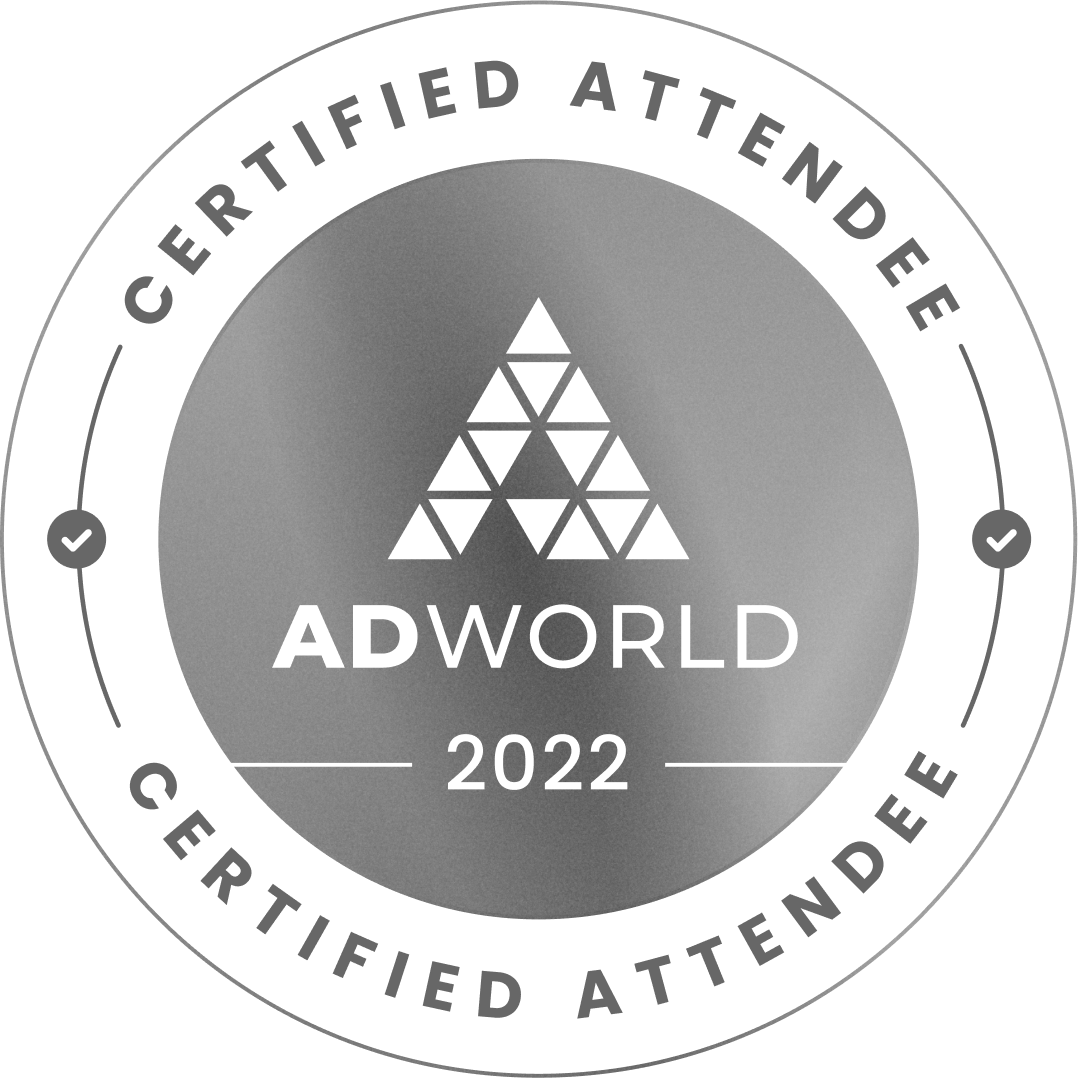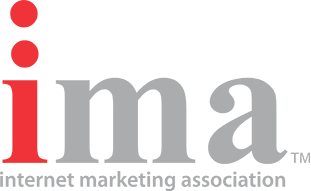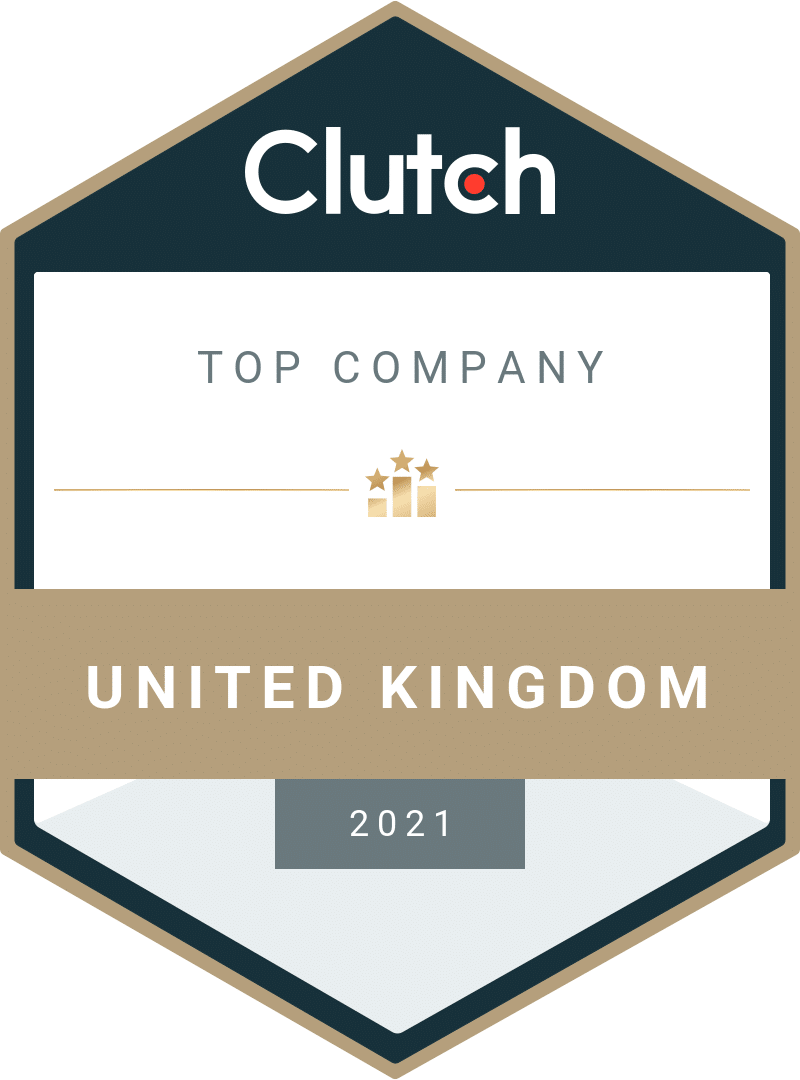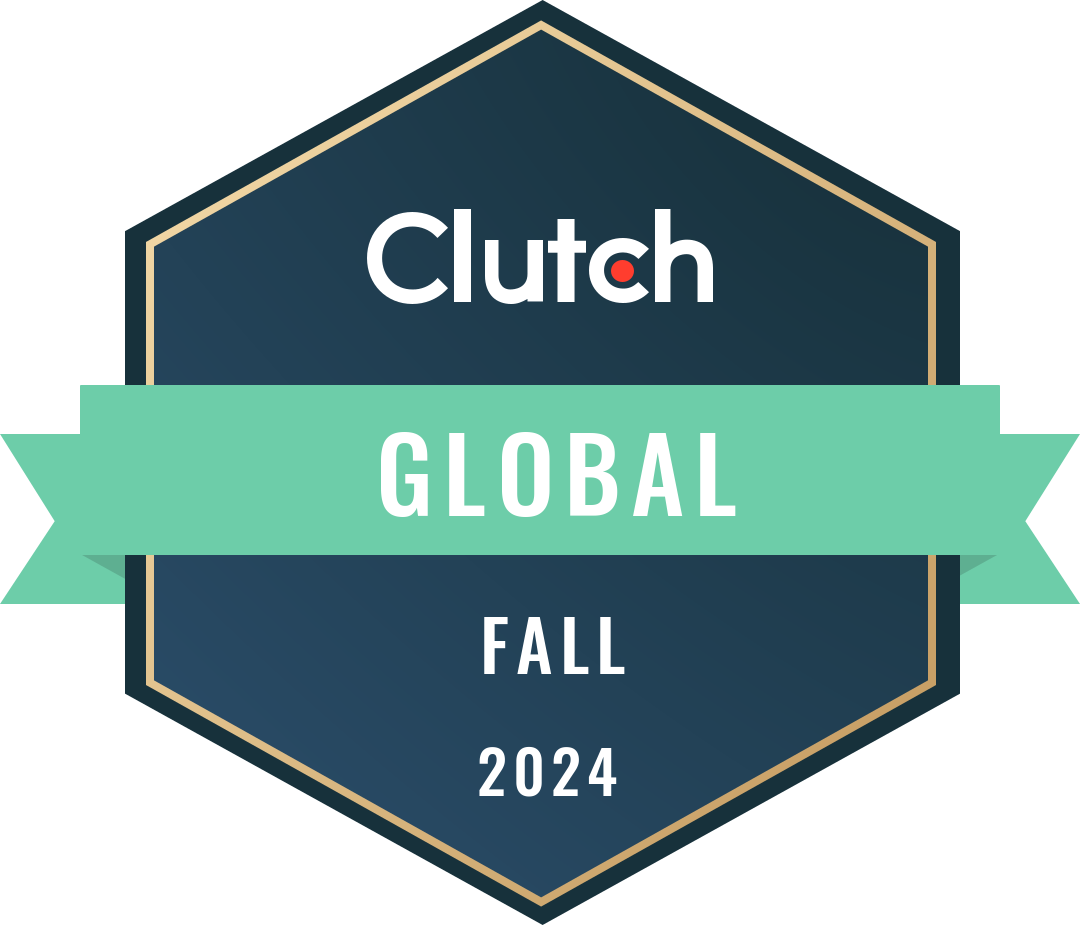Transcript
More specifically, we want to talk to you about awareness and how the quest to find new leads always starts at the awareness level. Yes. Even if you’re a B2B market, Here to chat with me today about why awareness ads are so important, is Amin geeky tech’s advertising guru and someone who has helped clients from all industries make the most of their marketing budget by focusing on top of funnel advertising.
Hi Amine, thanks for joining me today.
[00:00:47] Amine: Hey Genny, thanks for having me today.[00:00:50] Genny: Okay, so I mean, let’s get right to it. I wanna talk to you about why every B2B marketer should care about doing awareness ads. But the first thing I want to ask you is, do you find that many B2B marketing teams tend to avoid top of funnel advertising?And if so, why?
[00:01:07] Amine: Very good question. Um, B2B wise, I believe most B2B marketers or, uh, digital marketers or any, uh, decision maker that includes digital channels, including paid media on that list, either has tried or never tried focusing on top of the funnel or running top of the funnel advertising. But one thing.everyone does, is trying to focus on dimension as part of, um, you know, creating that demand to allow for everything that they do bottom of the funnel to capture the demand afterwards. Mm-hmm. now. Mm-hmm. in most cases, B, B2B marketing managers that we had experience working with, uh, follow. Mm-hmm. either.
Um, I’d say two scenarios. The first one is either they have tried but they never saw it working, or they did not have a clear objective or tried to include it in the first place, uh, on the plan with everything else to respond to the, if so, why is that? I believe, let me put it this way, most B2B companies fail, uh, in the awareness side of demand generation.
One of those scenarios that we’ve mentioned before, um mm-hmm. or they give up too early. Uh, and I believe most of them, when we first started working with some of them, they had like not very good expectations of what the results would be. Most of them thought that the results would be linear. Your, you know, like everything else B2B marketers do, they launch a lead ad, then you get.
They run an educational webinar, they get leads, they create a newsletter with the objective of nurturing the leads into opportunities. They get more engagement from those leads. The brand awareness kind of advertising, when it’s included as part of the demand gen activity, it’s not that way. The results won’t be linear, and most of the time marketing managers feel.
It’s a burden once they tried and they, they just return to the convenient legion that they’ve done for years. The reality is demand gen results are not proportional to the efforts. They’re basically exponential. So it does take time. It does need to gain a deep understanding of the customers. Does need to.
Have a clear objective and determine, um, which channel and content resonates within your audience that are still early on that stage and mm-hmm. to become known, liked, and trusted by that audience. It also,
[00:04:01] Genny: okay, thank you. I mean, when you said time, the first thing I thought of, Budget. And so I was thinking at the back of every advertiser’s mind is this budget they have to meet.Um, and I guess I can see why they might not wanna spend money on awareness ads that they don’t think are directly linked to sales, but is that the wrong way of looking at it?
[00:04:22] Amine: When we are on that like leads approach, definitely we won’t see any results directly linked through the awareness ads. If we launch awareness ads or try to include that on the media.Um, awareness ads are not used to generate leads immediately or are not used. Mm-hmm. to generate leads from those top of the funnel messages or landing pages or content in general. Uh mm-hmm. , they’re more here to build that trust and raise brand awareness and drive. Your product discovery, so the the goal is to start collecting compound interest.
When we do brand awareness campaigns, we start seeing that compound interest effect, uh, on all of the other transformation rates, but also at the cost per lead level at the bottom of the funnel. Mm-hmm. . So on average, when we run brand awareness adds, uh, it helps. At the first stages narrow down the engaged users from the non-engaged with the brand.
Okay? It also helps like slash the cost per leads later on the rest of the funnel stages. And you always like get bonuses that you cannot necessarily quantify, but definitely can feel, uh, and at the middle and the bottom of the funnel. Um, a good example would be, , you noticed that you started getting warmer leads, uh, okay.
Or inbound opportunities or your, um, better close rate, uh, start noticing better close rates as well. Okay. Yeah. So setting realistic goals is crucial here to make sure that. , uh, whatever budget you spend on the brand awareness, even though you can’t see the direct results right after launching the campaign.
But you definitely need to, to look at the right metrics and, uh, to get a sense of, um, of the, that like compound interest effect later on. Uh, so develop a mm-hmm. full final strategy that focuses from. Focuses on awareness, uh, generating and capturing the demand and even activating target accounts. And if you invest the necessary retirement resources into which you shall see the same effect across all of the life cycles stages.
Yeah. I just believe B2B companies cannot, like, take shortcuts, uh, to grow, uh, and paid media. It’s exactly the same if you are missing out on top of the funnel. , your competitors are probably already investing in there and by, by that time that those potential buyers need your service, you’re probably already behind when it comes to convincing those users that they should go with you and not everyone else.
Okay.
[00:07:30] Genny: Yeah, I think what you were saying a lot was investment, and that’s the thing that popped out for me too, is that it’s a investment, but it’s a good investment. So just jumping into more of the budget conversation, what percentage of your ad spend should be on brand awareness and what should be spent on lead generation?I know it’s probably different for each business, but do you have a good rule of thumb?
[00:07:51] Amine: Yeah, it, generally speaking, it is different from business to business. Mm-hmm. and what type of. Service or products, uh, the company offers. Um, okay. SaaS, um, SaaS software, um, companies when they, uh, run brand awareness, there is a certain, I believe, minimum that needs to be allocated to driving discovery to the actual solution or software.uh, in the global market before deciding to try to sell to those users? Uh, okay. Yeah. Generally speaking, and since the goal of these ads is to get you on your prospect’s radar and your product is unknown, and until it’s known, nobody probably would want to buy it. Um, usually hits some of the following topics, so the content.
and your potential audience size, those are the two variables that we will use to try to define what would be the, a good budget allocation between those objectives. The general rule of thumb with, let’s say a company with a potential target. Audience size in the US of 100,000 unique users, and we’re trying to rotate five different content pieces.
Mm-hmm. about educating. Your buyers on their challenges and pain points. The rule of time is to do, try to do 20 80%, so 20% of the budget should go or be invested in the awareness and everything else should be sharing that 80% and okay, by that I mean middle of the funnel and bottom of the funnel with targeting and everything else should be within that 80%.
[00:09:52] Genny: Okay, so 20% awareness ads. Yes. But I guess that 20% can mean, so like so many different, uh, numbers. I mean, it really depends on how competitive your industry is too, right?[00:10:04] Amine: Yeah. It depends on multiple variables. Yeah. Um, so I’m just like giving a general rule of thumb. Yeah. Which is. Yeah, try to allocate around 20%.Um, again, 20% of $1 million a month. It’s not 20%. Um, of another amount. There are some ad platforms that have minimum buys, um, right. Also, if you do awareness with direct publishers, some publishers require you to, uh, have a minimum spend per month. So there are, yeah, there are other variables to take into account, but if you are, let’s say you’re only, um, using display in YouTube for your brand awareness, uh, campaigns, those ad platforms allow you to invest as minimum, as like $1 a day, for example.
So should be, you should be fine, uh, depending on the channels you’re using for top of the.
[00:11:03] Genny: Okay. Are, are display ads more expensive than search[00:11:07] Amine: ads? Again, it depends. , we have, we have seen instances where display ads, cost per clicks ended up being more or a little bit more expensive than than paid search.Now there is a difference in we kind of comparing bananas to apples, which doesn’t make sense. Okay? The, generally speaking, most of the channels that offer brand awareness, objective type of campaigns, uh, you’ll end up seeing a much, much, much cheaper cost per contact then. every other objective. Mm-hmm. . So display, video, uh, paid social as well.
Twitter, Facebook, and Instagram. Those ad platforms will focus more on reaching the maximum, uh, number of your, uh, target unique users, and also generating high frequency contacts to make sure that they associate. Um, your messaging or your brand with the problem that your company tries, tries to solve. And I know most B2B marketing managers.
Or like Rich is sent to try Facebook and Instagram for brand awareness? Yeah. Depends on, depends on, again, depends on the business, on the industry, but okay. In some cases we’ve had, uh, good results in the top of the funnel with those as well. Um, simply because in some instances, Your buyers are only spending a fraction of their digital day on LinkedIn.
You can’t put everything on LinkedIn. And if you want to be known and your target audience to see you more often, you need to expand your channels, uh, on other platforms. Yeah. Now maybe using Facebook and Instagram only using the main campaign is a bad idea because those don’t offer like a good targeting.
Tactics to target B2B buyers, but if you have not budget, you can consider platforms like metadata.io or Clear Byte. Um, and those would allow you to target using like intent data, um, et cetera, which is much, much more valuable and expand your reach, uh, to those platforms as well.
[00:13:35] Genny: Okay, so they provide you with different, uh, d different data than the actual, like social platforms would give[00:13:41] Amine: you.Yeah. So Facebook as an example, would allow you, Facebook is, has better targeting tactics if you’re targeting, uh, individuals or when you’re, yeah, you’re a BSC kind of company. Uh, you can target using interests. You can target using, you know, demographics. You can’t use job titles or those kinds of attributes.
Mm-hmm. , simply because on Facebook there is a good chunk of users who, first, they don’t specify or share those informations on Facebook when we compare it to LinkedIn. So that’s why LinkedIn is a little. More reliable when it comes to that, right? Yeah. But those platforms like metadata as an example, and this is not sponsored or anything, but
yeah. They allow you to, uh, match users using external data. From Facebook with those users within Facebook, so you are still able to cut on budget waste. You don’t have to type into millions of users to hopefully reach the 1% you’re interested right in. And it definitely, like from a cost perspective, would be much, much cheaper than getting first timers from LinkedIn ads.
[00:14:53] Genny: Okay. I mean, when you and I were discussing this topic a few weeks ago, you, you mentioned something about building a machine that can feed itself. I think you probably alluded to that earlier, but do you wanna talk more about that?[00:15:06] Amine: Um, yeah, maybe what I meant back then, , uh, with that is, If, if I try again to put it in simple words and not go overboard, no explanations.the challenge is simple. If you want more users at the bottom of the funnel, you need to make sure of two things. You bring in, not users at the top of the funnel for the cheapest cost per contact, and that those users that you’re hearing at the top of the funnel are still within your, uh, general target.
So okay to create that machine that has a stable influx or, um, generates a stable amount of conversions. You need to provide it with a stable influx of traffic from within your target persona and brand awareness is a good way to do that. Reaching out to new users, bringing first timers to the website, educating people that, uh, users that weren’t aware that they even such a solution existed in the first place.
Mm-hmm. is a good way to bring those, uh, first timers at the top of the funnel.
[00:16:17] Genny: Yeah. Okay. That makes perfect sense. . Yeah, I’m feeding myself. Sorry, . Can you talk a bit about the link between company credibility and top of funnel marketing?[00:16:31] Amine: Yeah. Those two are interlinked and.It makes more sense when we are speaking about, you know, general channels to reach out to new users. Uh, the less you are known or your target buyers, uh, know about you. The less chances you’ll have to, um, to sell your product or software or whatever, what service you’re offering to them. Uh, and this is valid when it comes to B2B markets as well.
Uh, your target buyers, if your target buyers are not aware that you build that solution, they probably won’t be interested in it, and yet, mm-hmm. , the more likely you have to. Um, also a lot when it comes to middle and bottom of the funnel because you will enter that race a little bit too late. Yeah, that’s what I was thinking.
Yeah. So they, most users will, will. B will have already associated their, uh, potential solution with other brands just because yeah, those other brands were the first to provide them or educate them or provide them with free value or maybe Right. Um, share with them a block post on. how such thinks that is done manually can be automated using multiple software and yeah.
Mm-hmm. , we just happen to sell that software, so come check it out or book a demo or one with one of our experts to walk you through it. So definitely mm-hmm. , if you’re not present at that stage, you’ll definitely have to spend a little bit more, um, to try to convince Adobe’s users down the funnel. And that will definitely have a direct impact on your cost per each.
Yeah. Okay. So the long term solution. is to really focus on that full funnel strategy and not miss out on generating brand awareness and product discovery as part of your dimension activity.
[00:18:36] Genny: Mm-hmm. , and also just speaking from personal experience, I mean, obviously I’m not a B2B buyer, but as a B2C buyer, I’m way more likely to be interested in a company that’s sort of been with me this whole time and introduced.Like the, yeah, the pain point that I didn’t even know I had, I’d be way more likely to go with them than a new strange company that comes swooping in at the last minute and try and snatch a sale. I guess it’s,
[00:19:02] Amine: yeah, definitely. And yeah, uh, from my experience, it makes even more sense in the b2b, uh, okay sector, simply because, you know, we are not speaking about individual kind of, Services or products.We sometimes we’re speaking about software that would cost like hundreds of thousands of dollars worth of contract per month, or millions of dollars per per year. So it’s not an easy, uh, decision process and it’s not a short sales cycle, so, right. Exactly. It’s. From a, from a B2B perspective, it’s even more important to be as early as possible to have a really like good chance to optimize that final, final, final cost per lead or cost per customer once those users convert.
[00:19:59] Genny: Yeah. Agreed. Yeah. So I’m, I’m sure many listeners already understand what we mean when we say awareness stage, but can you give us a brief definition and maybe some examples of how that translates into[00:20:13] Amine: ads? So comparing to the conventional or standard legion that all B two Bs would, would try to prioritize for, for using in paid ads.Social like you. Booking demos with their experts, uh, free trials, all of those are what we call like hard friction call to actions because Okay. It requires the user to first of all, co complete certain tasks before they get access to the content or to the information. at the same time, if they’re not educated and not about that problem, they won’t see, they won’t even see the value in those things.
Right? And those things cost time. Some of that content, let’s speak about reports or write papers. Some of those, you know, cost, time and resources to produce, uh, to do the research. Um, even though there is like huge value in them, but some users are. Way too early to understand it and mm-hmm. , in most cases what we see is we, we start seeing good engagement.
Okay with the ads, but once those users are on the landing pages, uh, we don’t see any conversions. No one is downloading the white paper. No one is registering for that webinar simply because they don’t see the real value in it. Yeah. So that’s where, um, that’s where awareness ads comes into place is to ease that introduction and take that opportunity.
Also educate them. on their challenges and pain points with a soft okay. Introduction to both your business and also your core service or product. So most of the, um, like good examples on most of the messaging and content to to be pushed will be around that educating your buyers. On their challenges and pain points and introducing, uh, like linking the problem to your solution, introducing your brand in a soft manner by promoting content around it, promoting blog posts, and, uh, when done right, some of the advertisers usually see like exponential increase in the brand search terms as well.
Okay. Yeah. So, In some examples, just running a simple ad, uh, discussing a specific pain point that your target persona, um, faces each day on their job in their industry. We did not frequency what most users do, they would sometimes not engage with like those display banners. No one clicks on display banners, but what we’ll see is once they are facing that issue again, they would go.
Do some research about it. They will remember your brand and they will start researching you using your brand terms, so you don’t even have to pay for those broad or generic terms and be on the fight with everyone else. Simply thanks to that brand, brand awareness that you did before. , it’ll be kind of a shortcut.
They will research your brand. Oh, okay. Consult your content instead to get more of more information. So to know more about it. And it just helps also during the other final stages because you will be taking potential customers by hand. and making sure that they move through the funnel however you want it.
Um, some advertisers run sequential ads, for example. Mm-hmm. , and what that means is basically we are showing the ad platform. If user hasn’t seen banner A, don’t show them banner B. They haven’t seen banner B yet. Don’t show them banner C. And those a B ABC banners are kind of how we want the user to see our solution and sell it to them or get, you know, see the value in it.
Um, Um, yeah, and you’ll see general softer, uh, culture actions as well. You know, when you’re promoting the blog post, it’ll be learn more or read more. Yeah. Um, if it’s a podcast, it will be listen now, uh, or download our podcast. Um, but yeah, those softer, uh, culture actions would be, um, would be the ones you’d see in brand awareness ads.
[00:24:43] Genny: Okay, so let’s dive into the process of developing an awareness campaign. Let’s say I work for a company that has invented groundbreaking technology that promises to completely change cybersecurity. For example, I approach you and I say, Amin, I want to target the banking and finance decision makers. How can you help me?[00:25:04] Amine: Yeah, so usually, If you are already running ads, you probably know that la uh, LinkedIn ads has an easy way or approach to targeting those specific, uh, verticals that you want. Finance. Okay. Decision makers or banking decision makers. Twitter won’t have such a bank, Facebook and Instagram as well, or maybe less reliable than LinkedIn ads and display other than running some.Contextual keywords like cybersecurity platform for for banking or for banks or, yeah. You know, those keywords won’t be also that reliable, but luckily mm-hmm. , it’s just a matter of. If we understand the behavior and what kind of publishers your target decision makers, uh, would be consulting, we can find or use those standard targeting tactics to show your ads only to them even on the brand awareness.
Cuz what’s mo what most B2B decision makers or uh, digital marketers that we are worried about is there is a good cut from that budget that we need to go. As budget waste or wasted to tap into, you know, 1 million people to reach those 2 22 that are the decision makers we care about and we don’t want that.
Yeah. So luckily you can, you can adapt some of those stand standard tactics. A good example would be if you are running display ads, you can, for example, Why use a, a target white list of industry specific publishers? Let’s say, uh, finance and banking decision makers, they would all get their news from like, A big list of 10 websites that are industry right, specific, really known with really, you know, good authority.
Well, if those, those websites, um, have ad placements, you can tell the ad platforms. I only want to bid on ad opportunities if those added opportunities are in those website. Okay. That would be an easy way to cut on budget waste at the top of the funnel ads. Another example would be to use third party audiences, uh, or intent data audiences using those other tools for paid social for third party audiences.
Um, you can use it in, if you have access to a dsp, uh, like displaying Video 360, uh, or any other DSP that offers third party audiences. There are a. Audience providers, um, that would sell you access to their audience segments and then you can bid on add opportunities that are happening only for those specific users.
Um, so a good example for cyber security, you can, um, target a third party audience. That only contains, um, banking and finance decision makers. Yeah. And on top of that, specify that you only want to show ads when also the ad opportunity happens on. A page that is linked to a specific topic, let’s say, you know, a certain or a new data breach that, uh, another bank has, that would be the perfect opportunity for you to sell those services.
Because who, um, if we assure the user who’s reading that article is the finance and banking decision makers and they are reading that article, that’s really the top spot. So you can overlay multiple targeting tactics, standard targeting tactics on top of each. To really make sure your budget won’t go, go to waste and you’re as close as possible to only reach that specific target persona.
Um, so yeah, it is possible. It does require research. We usually do do it with the clients on a live session just so they understand and they could feed us those industry insights obviously, because we’re not experts in their field. Right. And. Usually we are able to translate those insights. They feed us into targeting, uh, opportunities.
Wow, that
[00:29:27] Genny: sounds like a lot of work. Is is most of that automated?[00:29:30] Amine: Once, once we have our targeting tactics, most of it is, Test and learn. Uh, let’s say we have like three or four potential targeting tactics. Depending on the budget, we can decide which ones to test first. If we have a good not budget, we can test all of them.And then as soon as we see good engagement from, let’s say two, we, we kill the other two, add insertions and keep the winning. But yeah, most of the time, It’s complex at first, just to define those targeting tactics. But once you test Yeah, some of them and um, and it can be within like one week, it can be within one month, uh, depending on the budget.
Usually with the higher budget you’re able to. Collect and not data faster, cuz you’re spending more on a daily basis, right? Mm-hmm. with a lower budget, you’re still spending the same budget, but it’ll be over, uh, a longer time period. So the tests would require longer period, but most of the time we’re able to see how those audiences engage very quickly and adapt the full media plan.
Mm-hmm. a.
[00:30:42] Genny: Okay. Okay. Well, I think at this point we should, I also wanna mention that in order for your awareness campaigns to be successful, you have to focus on building content on the other end of that click that sparks a user’s interest and shows off your, I guess, authority, um, but also not do it in a harsh way, like you were talking about before.In these types of campaigns, what sort of content types are the most suitable that, at least that you’ve.
[00:31:07] Amine: If I wanted to summarize it in a, in one sentence, it’ll be educating, digestible, free. Yeah, accessible. And I mean by accessible like ungated content that introduces your brand softly and starts linking, linking.your solution with your potential customers pain points or challenges. Uh, it can be any media type, a blog post, a video, a podcast. Um, yeah, you just need to make sure that you know, a podcast instead of a two hours episode. It could be, you know, small, digestible, 20 minutes, 15 minutes. Uh, segments that discuss specific topics because we need to remember those users, uh, that we’re trying to reach out to on the top of the funnel.
They’re not actively looking for you. Yeah. So they won’t necessarily be okay to invest a lot of time. You know, reading your content or checking your introduction to your, um, to your software video if it’s, if it’s really long. So you need to, to, to split it in multiple bits, make those digestible and more importantly, un gated because we have seen advertisers.
In the B2B sector, trying to push gated content to top of the final users and it, mm-hmm. never works. It only works if it’s a really good piece of like, Not content, but yeah. The, the, it’s like a downloadable, brand produced tool or something that they can use for free. Right. But it’s, it really depends on the industry.
Most of the time you need to offer free value upfront. Um, educative accessible and easy to read. And yeah, a company that would maybe do more in terms of quantity. Okay. And make all of those contents rotate. So each time they see a new thing. But all of those should respect what I’ve said earlier, uh, no matter what the media type is.
Yeah,
[00:33:26] Genny: and I also think that that gated comment, gated content comment, it’s the same for btc cuz I find that the most irritating thing they put, they make you go through these hoops and you’re just at the end of it, you’re like, I don’t even care anymore. So you just abandon.[00:33:39] Amine: Do you know what I mean? Yeah.Well, it, it really depends on b2b. Sometimes if, let’s say it’s a report that you spent one year producing, um, spent maybe tens of thousands of dollars to win research and Yeah. Paying different consulting companies. Collecting data, maybe you don’t want to trade that for free, and that’s, that type of content is more likely to have more values for probably users who, let’s say, understand really the problem, understand how your, let’s say your solution solves it and.
What, what they would benefit from getting it. But for, for, for top of the funnel. Um, sometimes you are, you are not only targeting the decision makers, but you are also targeting people around them in some cases. Like who they, people who would influence the decision makers. Yeah. It’s a per case scenario, but most of the time you can take small bits, insights.
Stuff from within that gated content. And make it as geezers. Yeah, exactly. And share that for free, for, uh, in your brand awareness. And that would get users to, um, or at least know, first of all, like the first touch. Not, not, not to be something hard friction, but be really soft. And then afterwards you can create audiences that.
We target middle of the funnel based on that engagement with those small bits that happened at the top of the funnel. That is also a strategy that you can, that you can do. Okay. And it refers to the machine that we spoke about earlier. Mm-hmm. . Um, yeah. So instead of, we target if of targeting everyone you can target based on engagement as well.
Mm-hmm. That would be a good way to filter out all unqualified users. Uh, you know, those who miss click as well. You can, for example, set it for videos. You can only target. users who have reached a certain point in watching while watching the video. 50%. 70%, yeah. And that’s a good indicator of engagement and mm-hmm.
that’s the whole point behind, like un gated content, it’s to really, mm-hmm. , uh, make sure all of the following ads don’t do the awareness objective or the qualification objective, but only reach users. Are ready for the next step.
[00:36:13] Genny: I guess that also means that it’s not just the ads you have to create, but it’s also the content behind the ads too, and Yeah.And you really need to focus on
[00:36:22] Amine: Yeah, definitely there sh there is always like a generic. Route that you can take if you are selling a service. Uh, simple brand awareness ads could be, you could have a banner set that just promotes your core service with dimension of what problem it solves. But yeah, depending on, depending on, on what you’re selling or offering, um, or who you are targeting.Definitely need to adapt the content. Yeah. Let’s say you are selling a software that would help, you know, a certain company, reduce the time they spend on a certain task. Mm-hmm. , and also help whoever is doing that task now, you know, focus on more important things. A good example why we should adapt the content.
um, to the target persona, the functional persona, whoever is doing that task, they won’t care probably about the pricing or they won’t care about, you know, the type of license, the licensing Yeah. Or the model you’re using to sell that software. Mm-hmm. , they would only care how it would make their, their, their.
Easier, more productive. Yeah. And help them with that task. So the message should push those things adapted and CU bespoke to that specific. Job titles, pain points. Now, their superiors would probably care more about the non-operational things they would say, yeah, they would like, their first question would be, for example, okay, how?
How many hours would the solution save my team or my department when it comes to this? So that’s another message for that specific target persona. Um, yeah, and at the end of the day, if you want to optimize your global campaign’s engagement metrics and conversion metrics, you absolutely need to focus on these micro, micro segments or micro aspects of the campaign and optimize all of these.
[00:38:36] Genny: Wow. No wonder you’re always so busy. I mean,Without naming names, can you give an example of a company that shuffled its advertising budget around to allow for awareness ads only to find enormous success?
[00:38:53] Amine: Okay. The most recent, the most recent example I would probably speak about is a company who are building a sad solution. Yeah, that solves huge pain to everyone who is using a certain e r p, uh, within multiple industries, manufacturing, uh, aviation, et cetera, and that, right.The problem that that company’s software solves is, Relevant to monitoring systems uptime and making sure you know all of the systems doing system health checks automatically. Which for that specific E R P, it can only be done with them e r P futures, but it doesn’t give the full control to the users.
So for IT managers or it, uh, department, it was a huge. Um, huge, uh, issue and it takes a lot of time to be done manually. Really complex. The checklist could not, could not be done by anyone. Uh, only people who are really trained in know, uh, their way around those systems. So the users of those systems, uh, providers either.
10 of thou, tens of thousands of of dollars to build or develop in-house automation to help with that. Mm-hmm. . But even when they did, first of all, it costs a lot. Second of all, it’s not, yeah. Security wise, uh, integration, safety, reliability is not, it’s not, it’s not the, the. The best when you, when you develop an in-house, um, solution, unless you spend like really good resources on it.
So it was just a matter of adapting the paid media plan to include brand awareness and to drive more people to discover that, okay, you don’t have to develop your own. There is a solution that we can fit. Uh, with your systems, uh, and even with your like, custom developed apps. Uh, or apps, sorry. And it, yeah, it was just a matter of integrating that top of the funnel brand awareness to, uh, make sure that more people know about it.
So we did that. We shuffled, like you said, the advertising budget. We took some from the middle of the funnel and made sure that the content also was. Uh, to achieve that objective and we created it. And, uh, the average cost per new contact generated decreased by around 15% in the first four months without closing any, uh, leads volume, which is really good.
So you didn’t have to add any more budget, you didn’t have to, uh, you know, sacrifice. The volume of leads you were getting each month on average, just to decrease the cost per new leads. Uh, just shuffle in the budget, producing a little bit more content that is more adapted to users who didn’t know that such a solution existed.
And at this point, those brand awareness campaigns became part of each year’s, uh, campaign’s calendar. We do them each year. Okay. Yeah. I believe five times a. , uh, each time we launched those campaigns for one month or month, one month and a half, depending on the, the events and the, the, uh, the seasonality.
But yeah, following that success, it become like a, a must in their media plans and that advertisers, uh, advertisers media plan would never like go without including, um, at least a certain, even if it’s a small chunk of. If the campaign needs, uh, brand awareness, definitely, um, they will always include it in their media plan.
Okay.
[00:42:49] Genny: So you’re not there when you’re talking to customers trying to push awareness ads. Are you ,[00:42:55] Amine: or, well, if we think that that’s where some advertisers, they have really good, uh, results, they’re just not able to scare no matter what they do. And sometimes they. They don’t believe that running any awareness ads would help with that.Um, mm-hmm. , so they maximize their reach within the audience list that they have. They maximize their reach within their target accounts list. Mm-hmm. , they already like converted. Uh, the percentage that they could convert from those, but to reach anyone else or introduce anyone else, uh, or keep keeping in touch and engaging with everyone else.
For, for whom the previous content wasn’t really, didn’t connect or click, they didn’t believe awareness could help with that, but sometimes that’s like your key to scaling or that’s your key to also optimizing. Bottom line, cost per contact. If you think about it financially, driving a new contact for $1, for example, or $2 is much, much better than driving a first contact for the first time, uh, in like, let’s say paid search for $40 in some keyword words, or $60.
It’s not the same thing. Definitely driving first timers and increasing, uh, brand discovery through top of the funnel channels is the way to go. Um, from all, from all aspects financially, content wise, and reaching the, like the bottom line conversions objectives. Wow.
[00:44:33] Genny: I feel like. Everyone listening understands that you are very pro B2B awareness adsWell, thank you so much for joining me today, Amin. I’m sure every marketer listening will be rethinking their advertising strategy after this. And on that note, listeners, thanks for tuning in to another episode of SEO Unfiltered, the last one of the year, 2022. Woo-hoo. Uh, if you want to learn more about how to empower your marketing with top of funnel advertising, we are going to leave a ton of resources for you in the show.
Don’t forget to follow us on Twitter, Facebook and Instagram at geeky Tech Geeks for all things SEO and advertising related. And lastly, listeners, just a small favorite. Please, if you like what you heard today, be sure to subscribe, like, and follow us on Apple Podcasts, Spotify, or wherever you listen to your favorite shows.
That’s it for now. Thanks, Amin.
[00:45:25] Amine: Thank you.Show Notes
What’s up, Marketing Geeks!
Are you spending at least a fifth of your marketing budget on B2B awareness ads? If you answered “no”, you’re definitely not the only one. So many B2B companies avoid awareness ads, but we’re here to tell you that it is a solid investment that can yield incredible results.
In today’s episode, Genny and Amine talk about full-funnel advertising that starts with brand awareness and educating “first timers” about their pain points. The sooner you can warm customers up at the beginning of their buying journey, the more likely they will consider your brand when they enter the decision-making stage.
We also talk about why LinkedIn isn’t the only social media platform that you should be focusing on and why gated content has no place in awareness ads.
Why focus on B2B awareness ads:
Get to potential buyers early in their journey
Establish your company credibility
Spend your budget wisely and reduce your bottom-of-the-funnel spending
Suggested Readings
Did you miss our last episode? You can hear previous episodes, transcripts, and show notes on our official SEO Unfiltered Podcast web page. Don’t forget to follow us on Instagram, Facebook, and Twitter @GeekyTechGeeks for all things SEO and advertising related. And lastly listeners, just a small favour: if you like what you heard today, be sure to subscribe, like, and follow us on Apple Podcasts, Spotify, or wherever you listen to your favourite shows.

